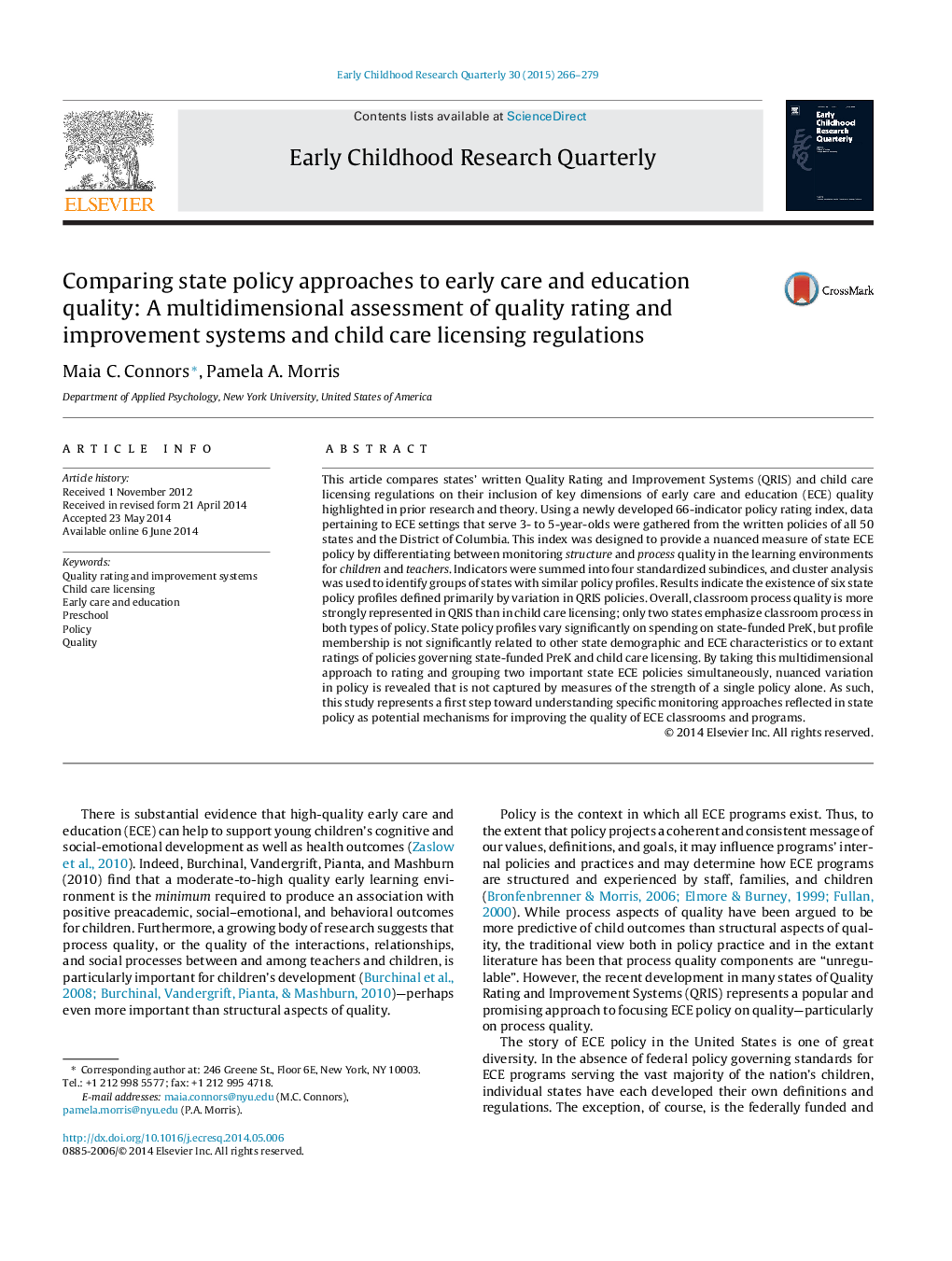| Article ID | Journal | Published Year | Pages | File Type |
|---|---|---|---|---|
| 353747 | Early Childhood Research Quarterly | 2015 | 14 Pages |
•We develop a rating index to measure regulation of key aspects of ECE quality.•We rate QRIS and licensing policy from 50 states and the District of Columbia.•We cluster states into six policy profiles based on patterns of subindex scores.•Patterns of standards vary more in QRIS than in licensing regulations.•QRIS emphasizes process quality more strongly than does licensing.
This article compares states’ written Quality Rating and Improvement Systems (QRIS) and child care licensing regulations on their inclusion of key dimensions of early care and education (ECE) quality highlighted in prior research and theory. Using a newly developed 66-indicator policy rating index, data pertaining to ECE settings that serve 3- to 5-year-olds were gathered from the written policies of all 50 states and the District of Columbia. This index was designed to provide a nuanced measure of state ECE policy by differentiating between monitoring structure and process quality in the learning environments for children and teachers. Indicators were summed into four standardized subindices, and cluster analysis was used to identify groups of states with similar policy profiles. Results indicate the existence of six state policy profiles defined primarily by variation in QRIS policies. Overall, classroom process quality is more strongly represented in QRIS than in child care licensing; only two states emphasize classroom process in both types of policy. State policy profiles vary significantly on spending on state-funded PreK, but profile membership is not significantly related to other state demographic and ECE characteristics or to extant ratings of policies governing state-funded PreK and child care licensing. By taking this multidimensional approach to rating and grouping two important state ECE policies simultaneously, nuanced variation in policy is revealed that is not captured by measures of the strength of a single policy alone. As such, this study represents a first step toward understanding specific monitoring approaches reflected in state policy as potential mechanisms for improving the quality of ECE classrooms and programs.
